Portland-Hillsboro Airport (HIO)
Portland-Hillsboro Airport (HIO) is in Hillsboro, Oregon and is located 15 miles west of the larger Portland International Airport (PDX). Extensive flight training, many tenant aircraft, and business and corporate aviation services utilize the airport. This mix of pilot experience and aircraft performance capabilities makes HIO a challenging environment. View a printable Pilot Handbook of the HIO information found on this Web page.
Know Before You Go
- The airport configuration consists of parallel RWYs 13L/R, and RWYs 31L/R.
- RWY 13L/31R is shorter and narrower than parallel RWY 13R/31L.
- RWY 2/20 intersects RWY 13R/31L.
- The airspace at HIO is Class D. (Refer to Sectional Chart.)
Below find various HIO-specific information and things to be aware of, as well as general information to inform your preflight planning. This will be reviewed quarterly and updated as needed. This information is to supplement the From the Flight Deck Videos that are produced by the FAA Runway Safety Group. Here you will also find information provided by the local air traffic controllers at the airport where you intend to fly. The information is subject to change. Not for navigation or legal* pre-flight action. Always refer to official pre-flight materials such as, but not limited to, NOTAMs, airport diagrams, VFR charts and airport construction notices for the latest airport-specific details.
HIO Tower Hours of Operation – 0600L to 2200L
Administrative Office Open 0700L to 1530L M to F
Business Phone 503 - 615 - 5482 or 503 - 615 - 5479
Hot Spots
HS 1 Aircraft exiting RWY 13R/31L at TWY A6 have only 90’ of clearance between TWY A
centerline and holding position markings.
HS 2 Pilots taxiing from the RWY 31L run-up area via TWY A8 to RWY 31L for departure
sometimes fail to hold short of RWY 13R/31L.
Wrong Surface Intersection Takeoff
- Pilots have departed in the wrong direction during intersection departures.
- Verify proper heading prior to entering the RWY on ALL Departures.
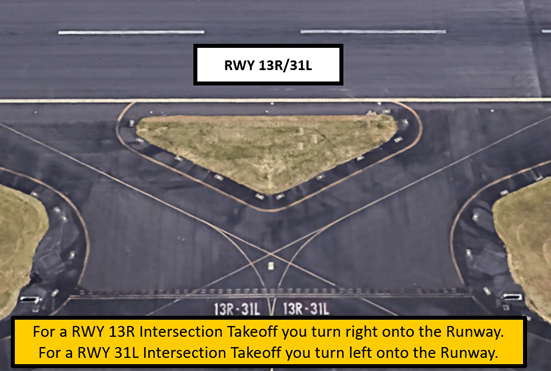
Wrong Surface Events on Parallel TWYs
- A Wrong Surface Risk exists whenever a TWY parallels the RWY. Positive identification of the RWY needs to be a part of every before takeoff and landing checklist. (See illustration below.)
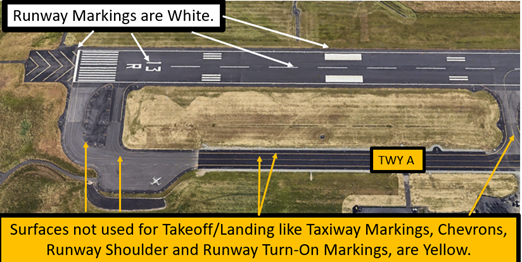
Wrong Surface Landings- See Arrival Alert Notices.
- Wrong Surface Landing Risk exists due to parallel RWYs with staggered thresholds.
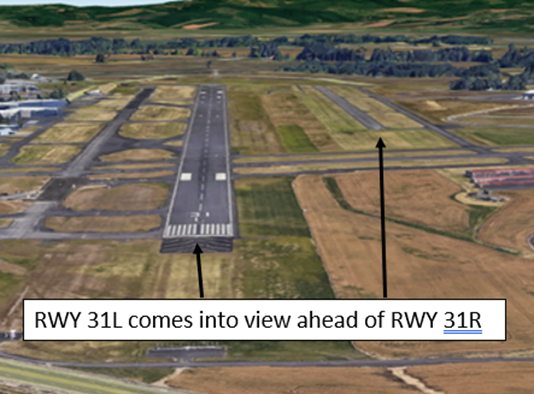
Surface Risk – Movement Area Cautions
Aircraft exiting RWY 13R/31L at TWY A6 have only 90’ of clearance between TWY A centerline and holding position markings.
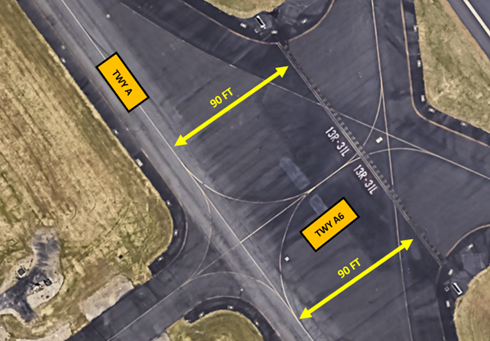
Pilots taxiing from the RWY 31L run-up area via TWY A8 to RWY 31L for departure sometimes fail to hold short of RWY 13R/31L.
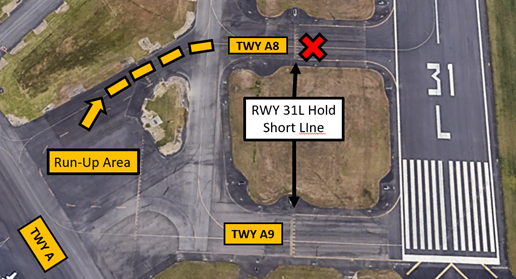
Additional Cautions
- Be alert for bird activity from November to May.
- Glider Operations 5 nm NW during daylight hours from March to October.
- Be alert for extensive helicopter training ops to TWY A, TWY B, and TWY D.
- RWY 13R run-up area is not visible from the air traffic control tower.
- Noise abatement procedures in effect – Call 503-460-4100 or 800-938-6647.
- RWY 31L is preferred RWY for noise abatement.
- Noise sensitive areas border the airport to the west, south and east.
- Avoid low-level overflights of residential areas whenever possible.
- Nighttime touch and go landings are discouraged 0600Z to 1400Z.
- RWY 13R/31L closed to touch and go landings between 0600Z-1400Z.
General
- Hillsboro Airport is uniquely designed with closely spaced parallel RWYs with an intersecting RWY making it essential for pilots to maintain keen awareness to avoid confusion.
- Given the high-volume pattern traffic, especially concerning the closely spaced parallels, communication and clarity between ATC and pilots is important.
Runways
- The airport features RWYs: 31L, 31R, 13R, 13L, 2, and 20.
- Due to their phonetic similarity, double-checking RWY assignments and pattern entry points are encouraged.
Traffic Patterns
- Helicopters: 700ft MSL
- Fixed-wing single engine: 1200ft MSL.
- Large or turboprop/jet aircraft: Expect 1700ft MSL or above based on the side of the airport you're checking in from.
Weather
- Weather can change rapidly. Winter brings low clouds blocking access to the ridge lines northeast and west of the airport. Fog is common on winter mornings, often lifting in the afternoon.
- RVRs (Runway Visibility Readings) are available for RWY 13R.
- Strong northeast winds typically lead to RWY 2 configuration, with RWY 13R as an alternative for large aircraft. Conversely, low-pressure systems usually set us on a RWY 20 flow with RWY 31L for larger aircraft.
- The airport uses deicer trucks for snow and ice removal, primarily focusing on taxiway Alpha and RWY 31L/13R.
Runway Crossings
- Due to the layout, RWY crossings are more frequent than at other airports.
- Be aware that pilots have failed to hold short of RWY 31L on TWYs B and C.
- Taxiway Alpha at RWY 2 features RWY Guard Lights.
- Clear and concise readback of hold instructions is essential.
Departures and Arrivals
- Be ready at the RWY Holding Point, anticipating quick takeoffs due to inbound traffic.
- Arrivals should take the first available exit after landing.
- Due to line-of-sight issues from the control tower, the controllers have a difficult time discerning whether an aircraft has crossed the hold short lines at D1 and D2. During periods of heavier traffic, controllers may instruct pilots who land Runway 13L/31R to “report off” when exiting at D1 or D2. Pilots should review NOTAMS for the Letter to Airmen LTA-HIO-4 “Hillsboro Tower Line-of-Sight Issues” for specific details.
- Be particularly alert to altitude restrictions.
Special Areas of Interest
- For noise abatement, traffic pattern direction might change to avoid neighborhood overflights.
- Helicopter training, especially during spring and summer, takes place near the active RWYs in preparation for fire season. They usually hover between 700ft and 1200ft north of the airport.
- Be aware of occasional large jet departures on weekdays and glider operations within a 15-mile radius.
- We also use LAHSO (Land and Hold Short Operations) only on RWY 13R.
Communications
- For inbounds, pilots should communicate clearly about their intentions and location along with the ATIS code. Clearance delivery is combined with Hillsboro Ground control.
- If in a run-up area, contact ground once your run-up is complete before moving.
- For different landing types, like touch and go vs. stop and go, make a new request.
Safety and Other Notes
- Watch for overshooting final due to the proximity of parallel RWYs.
- Annual airshows typically take place in May.
